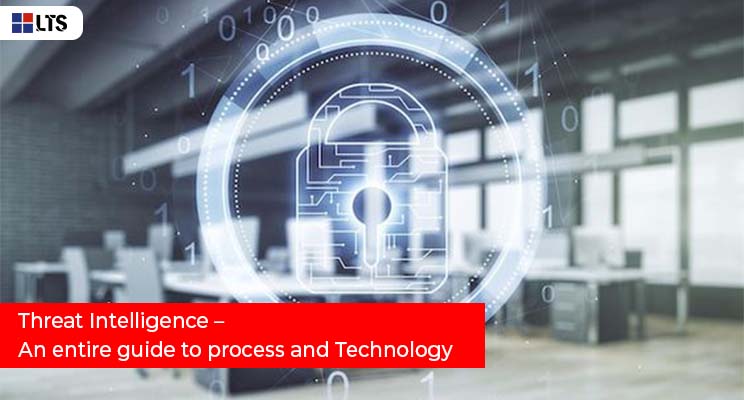Threat Intelligence – An Entire Guide to Process and Technology
Cyber ??Threat Intelligence indicates actionable information regarding cyber threats. This data reaches our security team after data processing and classification according to trustworthiness. Security analysts use secondary data from trusted sources and structured trading techniques to investigate threats thoroughly.
Cybersecurity professionals use data protect to investigate potential threats and attack methods used by malicious actors. This information helps reduce the risk and impact of cyberattacks, allowing organizations to identify potential attacks and take countermeasures against attack vectors. Security solution helps teams prevent cyberattacks by analyzing data about attackers, their skills, and motivations. Zero Trust Security is a form of cybersecurity that protects organizations by reducing implicit trust and continuously validating all phases of digital interactions.

Why Threat Intelligence Matters
As attackers who exploit cybersecurity vulnerabilities to target organizations become more sophisticated, industries and organizations must improve their threat detect capabilities. Actionable data safe is essential to protect your digital infrastructure and assets properly.
A complete understanding of the threat landscape enables organizations to accurately identify and prioritize risks and implement appropriate tools and techniques to respond to threats. A key aspect of Data Security is finding information in the right place. As attackers use multiple channels, it becomes increasingly difficult to know where to look.
Many hacker groups operate through the deep or dark web. Security teams must be familiar with these obscure and often overlooked parts of the cyber world. To proactively prevent attacks, organizations must also understand how attackers target them (risk-open).
Threat Intelligence and Threat Hunting
Threat hunting is a proactive technique that identifies unknown or unpatched threats on an organization’s network. A successful threat-hunting program depends on the wealth of data available in your environment. Organizations must first implement corporate security systems to collect data on an ongoing basis. The collected information provides valuable leads for threat-hunting teams.
Threat-hunting techniques help uncover unknown aspects in a given environment. These go beyond traditional threat detection technologies such as Endpoint Detection and Response (EDR) and Security Information and Event Management (SIEM).
Threat Hunter scans security data for hidden attackers and malware. Identify suspicious behavioural patterns that computers ignore or don’t recognize, and harden or patch corporate security systems to prevent these cyberattacks from happening again.
Data Solution refers to information about intrusion attempts and successful security breaches. Contains datasets collected and analyzed by automated security systems, typically with artificial data and machine learning.
Threat hunters utilize Data Theft to search for malignant actors throughout the system. In brief, threat hunting is the extension of Data Security. The successful threat can also identify yet to be found in the wild.
What Types of Threat Intelligence are There?
Threat intelligence is broadly divided into four categories, comprehensively assessing the cyber threat landscape.
Strategic Intelligence –
- Strategic Intelligence summarizes potential attacks and consequences for non-technical people such as business people. Based on a thorough analysis of emerging global trends and risks, our intelligence team typically presents this type of analysis as a white paper report or presentation. Communicate the threat landscape that affects a particular situation.
- Tactical Thinking – This type of data protection details hackers’ tactical techniques and procedures. Its target audience is those directly responsible for IT and data resources security.
- Technical Intelligence – Technical data behaviour focuses on Indicators of Compromise (LoC) that indicate active attacks. These LoCs include reconnaissance measures to arm vulnerabilities and attack vectors. This type of intelligence plays a key role in defending against social engineering attacks. Many people confuse it with operational intelligence, but the difference is that technical intelligence is more adaptable and can be quickly deployed when attackers change tactics to exploit new avenues of attack. It’s about adapting.
Operational Intelligence
- This variety of data protect incorporates information from many sources like – Social Media Platforms, Chat Rooms, Antivirus Logs, and Historical Events. Analysts use operational intelligence to predict the timing and nature of future cyberattacks. Machine learning and data mining can automatically process many data points in different languages.
For more details on Threat Intelligence, visit https://en.wikipedia.org/wiki/Cyber_threat_intelligence.
The three critical elements of an advanced cyber threat intelligence program include– Security Orchestration, Automation, and Response (SOAR), ensuring security teams detect and respond faster to emerging threats.
The most important threat intelligence components are good data sources, authoritative threat analysts, and good threat prevention.” These three components enable organizations to identify, validate, and prevent threats.
Threat intelligence helps organizations of all shapes and sizes to process threat intelligence, understand attackers better, respond to incidents faster, and proactively anticipate attackers’ next moves.